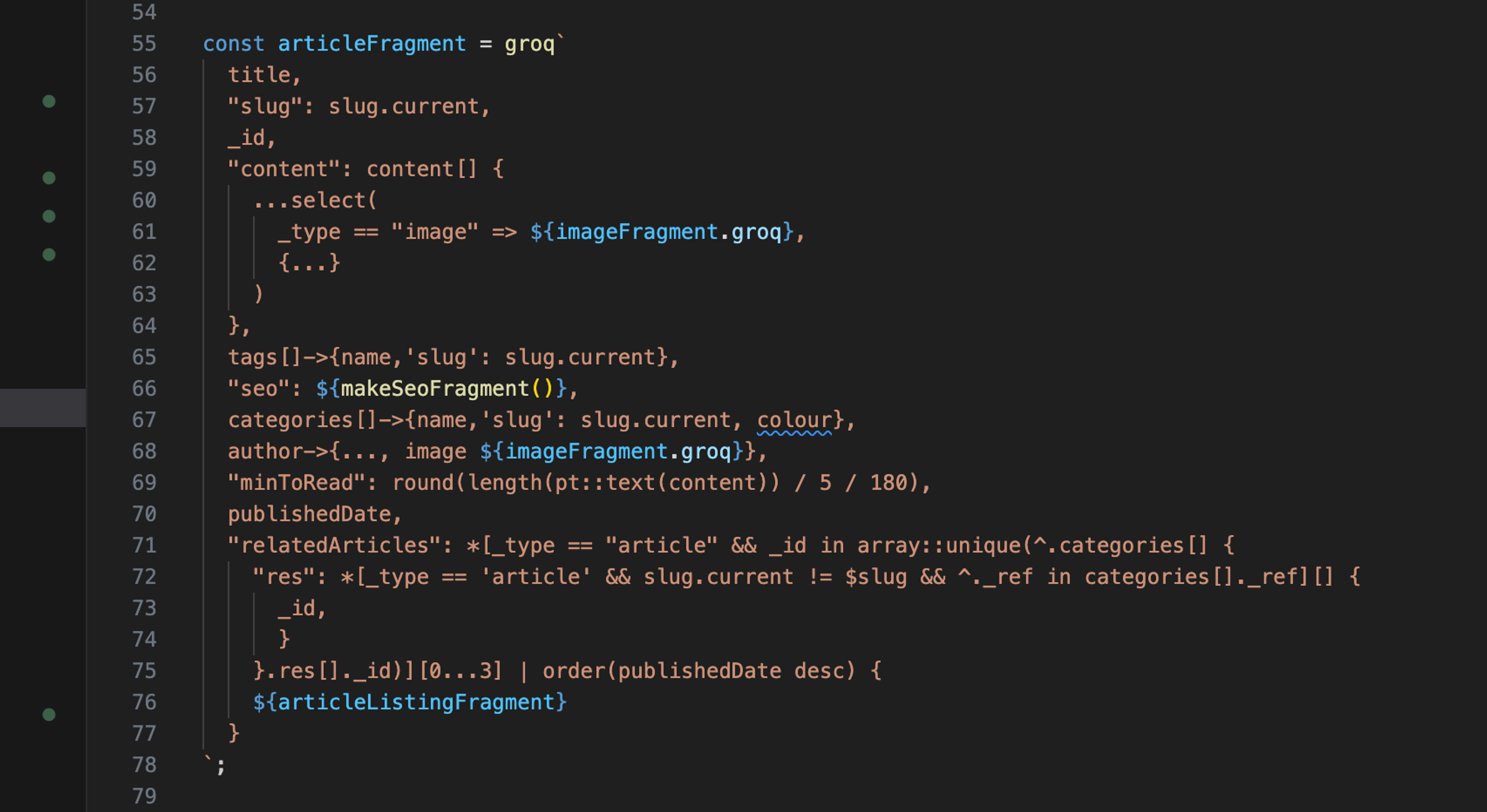Exploring GROQ: Sanity's Powerful Query Language

Alain Ritchie
21.12.2023

Introduction
Over the years, I’ve had the privilege of working with various tools and technologies that streamline and enhance our development projects - admittedly not all stick around for the long run. One tool that has proven to be incredibly valuable is GROQ (Graph-Relational Object Queries). Let’s dip into what makes GROQ a standout query language and why it's becoming an integral part of our tech stack.
What is GROQ?
GROQ is a query language designed specifically for querying structured content. It's part of the Sanity.io ecosystem but stands out due to its flexibility and expressiveness. At its core, GROQ allows you to describe exactly what data you need from your content repository, no more, no less. We like efficiency.
GROQ vs GraphQL
Both GROQ and GraphQL offer unique advantages, but they cater to different needs and preferences. As a team, we've been drawn to GROQ for its straightforward and intuitive approach, especially when working with Sanity's structured content. It shines in its ability to handle complex, deeply nested queries with ease, which is a excellent when dealing with JSON-like data structures.
In contrast, GraphQL has been part of our toolkit for a long time, due to its flexibility and the power it brings in aggregating data from various sources. Its strong type system and capability to fetch multiple resources in a single query make it incredibly efficient, especially in reducing over-fetching of data.
While GraphQL boasts a larger community and broader adoption, I appreciate GROQ for its simplicity and effectiveness within the Sanity content ecosystem (read CMS).
Why GROQ?
As someone who’s navigated the complexities of various query languages, including GraphQL based CMS solutions (which we still love and use elsewhere), here's why GROQ captured my attention:
- Simplicity and Power: GROQ strikes a unique balance between being easy to learn and powerful in execution. Its syntax is intuitive yet capable of handling complex queries with ease.
- Real-time Content Fetching: In an age where content needs to be dynamic and real-time, GROQ’s ability to fetch exactly what you need in real-time is invaluable.
- Structured Content Focus: Unlike traditional SQL or NoSQL queries, GROQ is tailored for structured content, making it a perfect fit for headless CMS platforms, and why Sanity built it!
Of course the other reality is that Sanity is a fantastic content store solution and GROQ is very much part of that. There's another whole conversation around 'CMS' options though.
GROQ in Action
To illustrate the power of GROQ, let’s look at some practical examples:
Fetching latest articles with authors and categories

This query fetches the latest three published articles. It includes the article title, body, author's name, and category titles. The author->name and categories[]->title demonstrate GROQ’s ability to traverse references and arrays to fetch nested data.
Retrieving a specific article with conditional logic

Here, we’re retrieving a single article based on its slug. Additionally, we fetch the author's name and bio, and related articles that reference the current article’s ID. This showcases GROQ’s ability to handle conditional logic and cross-referencing within documents.
Complex filtering for a product catalog

This query is for a product catalog, fetching products under a specific price and within selected categories. It also demonstrates GROQ’s capability to filter based on array values (category in $categories) and fetch nested data like the main image URL and tags.
Use in projects
At Neverbland, leveraging GROQ in our projects plays a key role in optimising the content retrieval process through:
- Efficient Data Fetching: Its efficiency in querying exactly what we need improves our application's performance.
- Real-Time Updates: For projects requiring real-time content updates, GROQ + Sanity provides a seamless real-time data fetching capability, helped by the above.
- Custom Content Queries: We often deal with complex content structures. GROQ allows us to craft custom queries that cater to these complexities without added overhead.
The Learning Curve and Resources
GROQ's learning curve is relatively gentle, especially for those familiar with JSON and JavaScript. The documentation provided by Sanity is comprehensive, including the cheat sheet offering a good starting point for anyone looking to dive into GROQ.
I highly recommend exploring the potential of both Sanity and GROQ.
Related articles

Reaching your Peak Potential
4 min read


